Are you interested in learning how to quilt with a sewing machine? Quilting with a sewing machine is a great way to create beautiful quilts without the hassle of hand-stitching. In this article, we’ll provide a step-by-step guide on how to quilt with a sewing machine, from setting up your machine to completing your quilt. With these tips and tricks, you’ll be ready to start quilting with a sewing machine in no time!
What You Need to Know Before You Begin
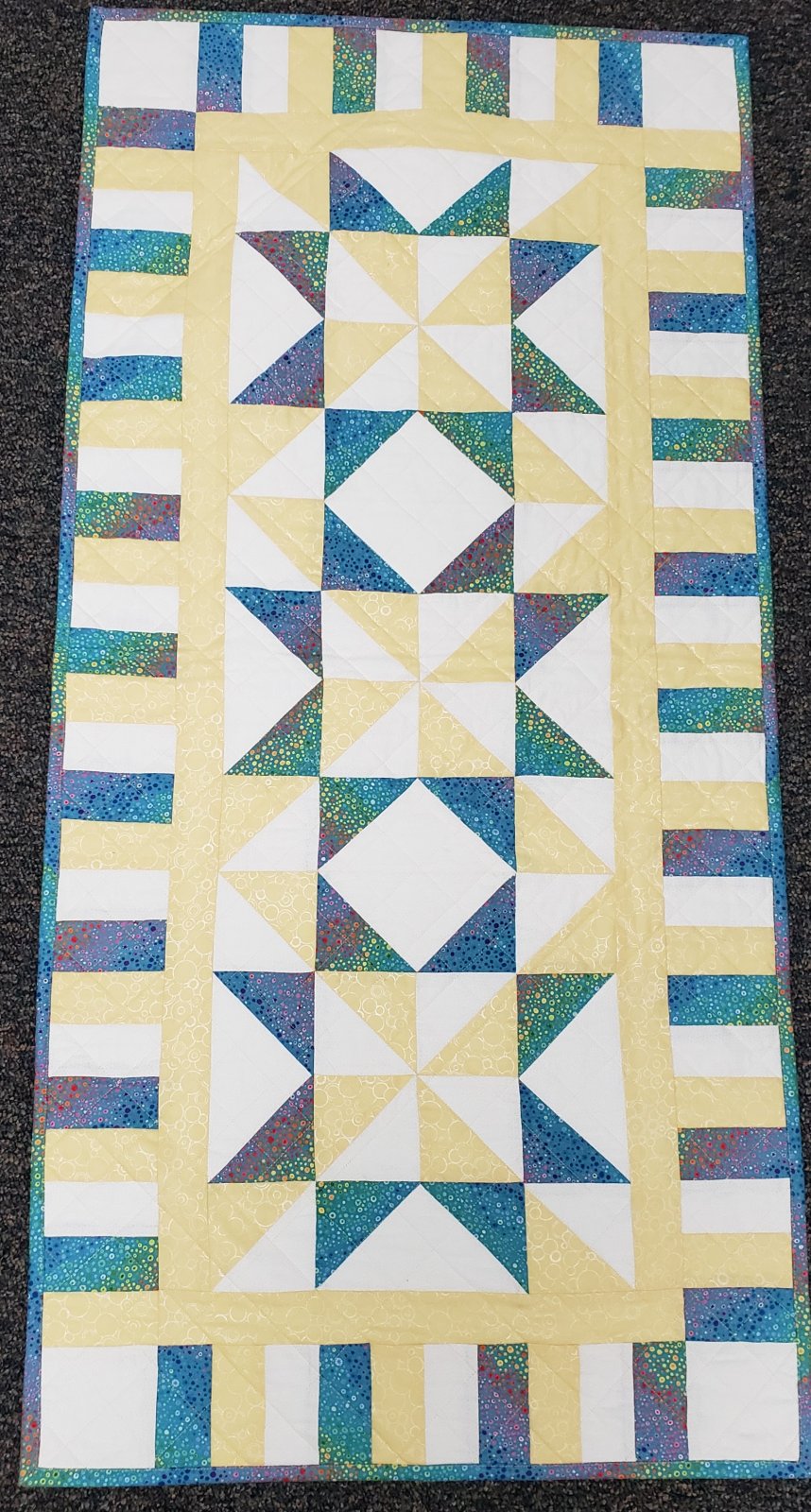
Types of Sewing Machines
When quilting with a sewing machine, it’s important to make sure that you have the right type of machine for the job. Regular sewing machines can be used for quilting, but they might not be the best choice. Quilting machines are designed to handle the large amounts of fabric involved in making a quilt, while regular sewing machines may struggle.
Quilting Supplies
When quilting with a regular sewing machine, it’s important to make sure that you have the right supplies. Quilting requires large amounts of fabric, so make sure that you have enough fabric for your project. You’ll also need thread, a cutting mat, rotary cutters, rulers, and pins.
Quilting Basics
Before you begin quilting, it’s important to understand the basics. Start by preparing your fabric. Cut out the pieces that you need, and then lay them out on the floor or a table. Pin the pieces together, and then use a ruler and rotary cutter to trim and square them up. Once the pieces are ready, you can begin sewing them together. When quilting with a regular sewing machine, use a straight stitch and a walking foot. This will help ensure that the stitches stay even and the fabric doesn’t shift while you’re sewing.
How to Quilt With a Sewing Machine
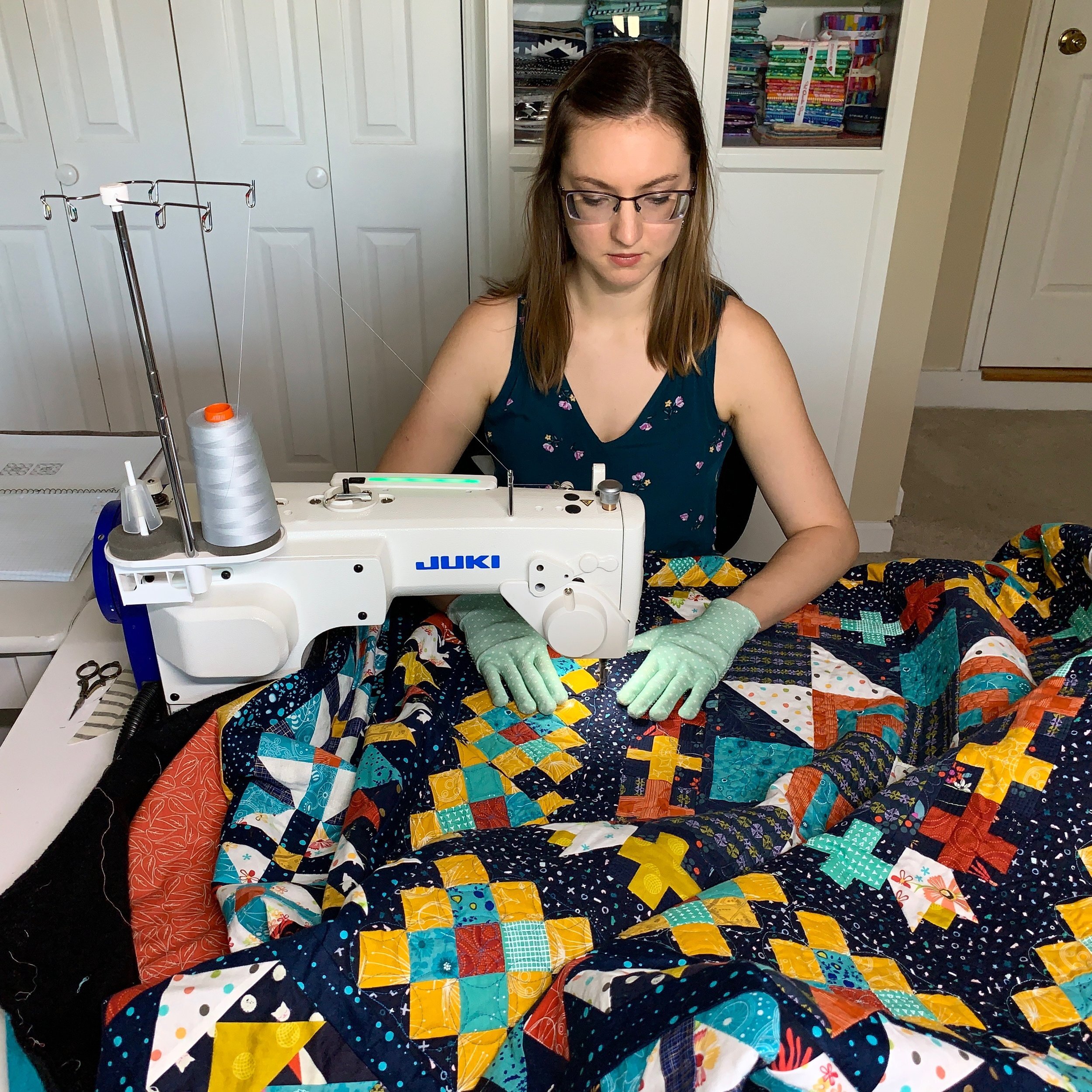
Preparing Your Quilt
Before beginning to quilt, it is important to properly prepare the quilt top. Cut the fabric for the quilt top and backing to the desired size. Square up the edges and press the fabric. If using batting, cut it to the same size as the quilt top and backing. Layer the quilt top, batting, and backing, ensuring all edges are even. Pin the layers together to prevent slipping while quilting.
Sewing the Quilt Top
For a traditional quilted look, sew the quilt top together with a ¼ inch seam allowance. Choose a coordinating thread color that will best show off the quilt top design. To avoid puckering of the fabric, use a walking foot or hopping foot.
Adding the Backing
Pin the backing to the quilt top, ensuring the edges are even. Sew the backing to the quilt top with a ¼ inch seam allowance.
Quilting the Quilt
Quilting the quilt top is the most time-consuming part of the process. How to machine quilt a large quilt depends on the look desired. For a traditional quilted look, use a straight stitch and start at the center of the quilt and work outwards. Stitch in the ditch around the quilt top and then add quilting lines.
Finishing the Quilt
Once the quilting is complete, trim the excess batting and backing. Sew the quilt top and backing together using a ¼ inch seam allowance. Bind the quilt with a coordinating fabric or bias binding to finish.
How to Machine Quilt a Large Quilt
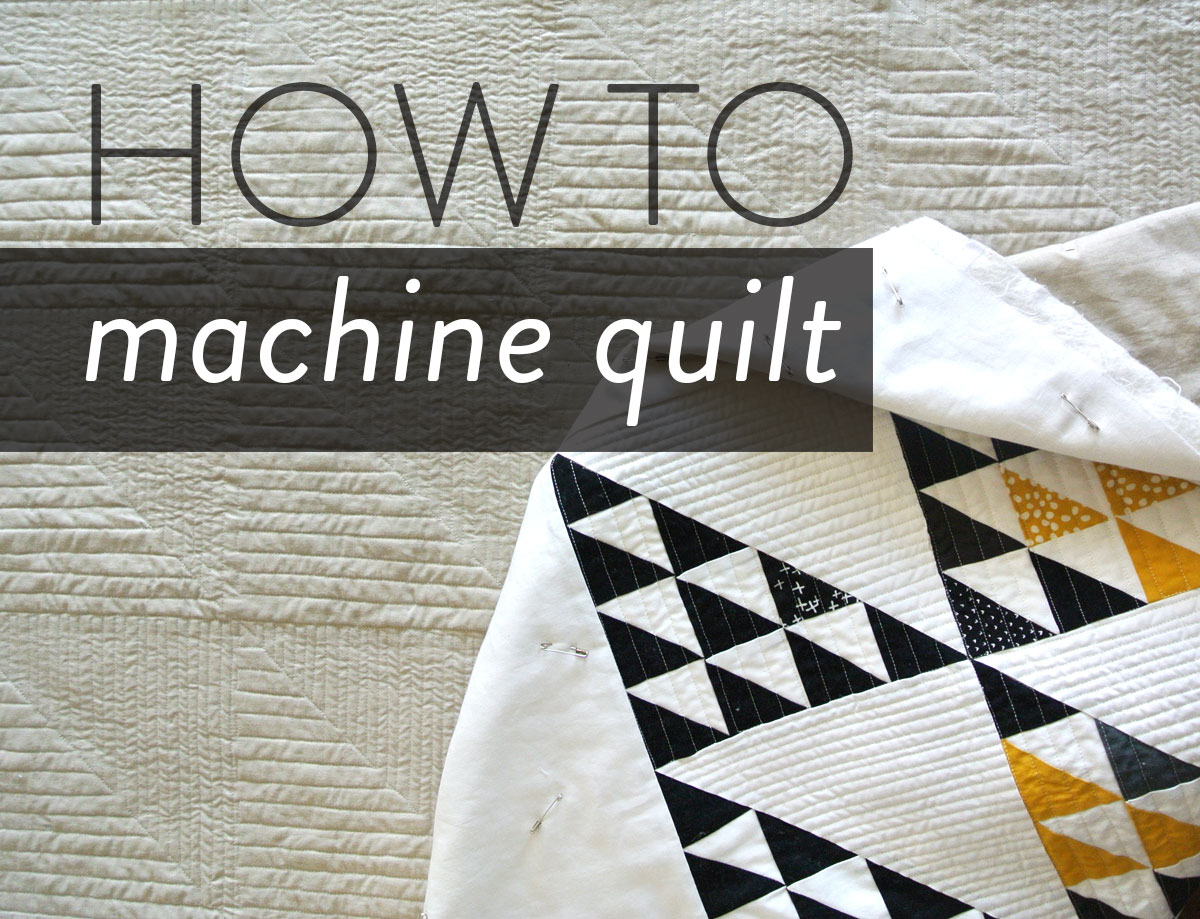
Quilting Large Quilts with a Sewing Machine
Quilting large quilts with a sewing machine can be a time-consuming process, especially if you are working with a regular sewing machine. To make the process easier it is best to plan ahead and have all the necessary supplies on hand before starting. Be sure to have extra needles and bobbins, as well as a larger machine quilting frame to support the quilt.
Quilting Large Quilts with a Regular Sewing Machine
Quilting a large quilt with a regular sewing machine can be accomplished by using a walking foot to move the quilt through the machine. This works best when using a straight stitch and can be done by hand or by using a quilting guide. Before starting, it is important to test the stitch on a scrap piece of fabric. Once the stitch is set, start at one corner of the quilt and move the quilt slowly through the machine. It is best to use a smaller stitch length and to take breaks as needed to avoid fatigue and strain.
Tips for Successful Home Machine Quilting:
- Be sure to use the right needle and thread for the quilt and fabric type.
- Use a walking foot to move the quilt through the machine.
- Test the stitch on a scrap piece of fabric before starting.
- Keep the quilt tight and smooth, and use a quilting guide for accuracy.
- Take frequent breaks to avoid fatigue and strain.
By following these simple steps, you can successfully machine quilt a large quilt at home. With a little practice and patience, you can create beautiful quilts that will last for years.
How to Quilt Without a Quilting Machine
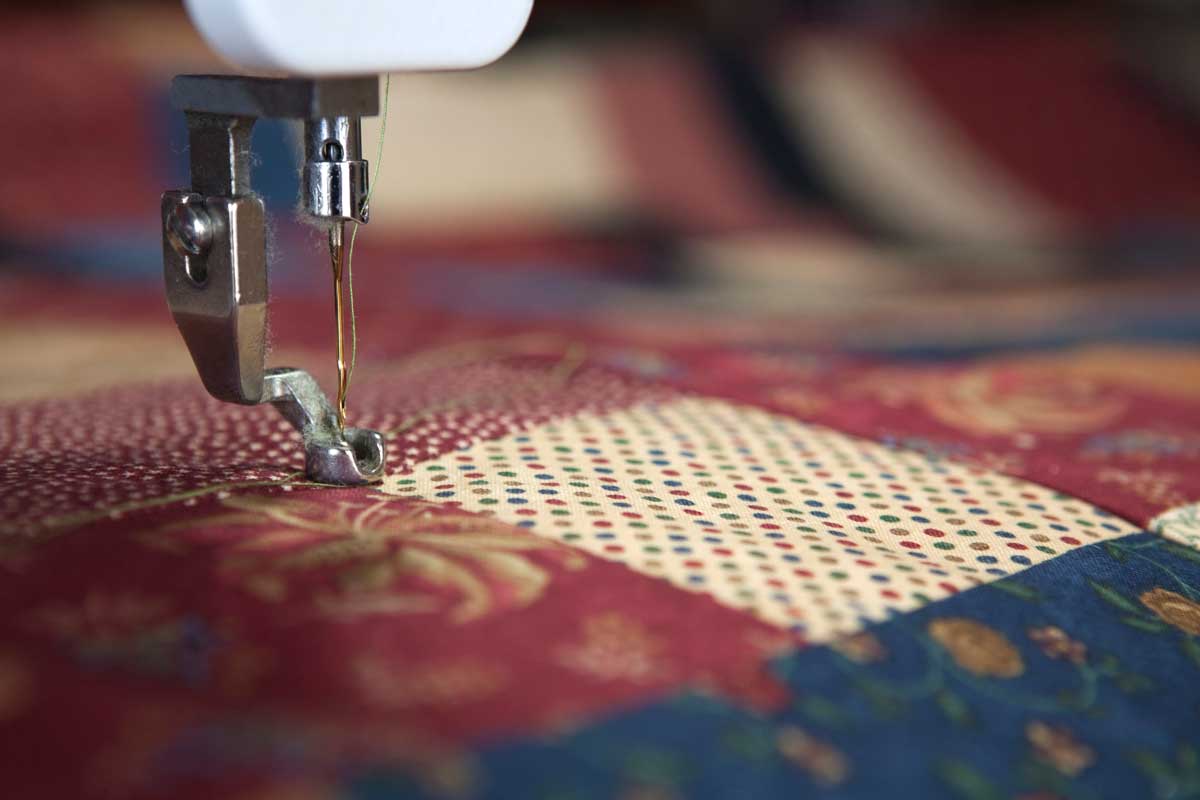
The Hand Quilting Method
Hand quilting requires a certain level of patience and skill. Begin by layering the quilt top, batting, and backing fabric. Secure the layers together using safety pins. Start quilting by using a quilting hoop to hold the quilt in place. Begin quilting from the center and work your way out. Use a quilting needle and thread to stitch the quilt together, creating a design of your choice. Hand quilting is a time consuming but rewarding process.
The Machine Quilting Method
For a quicker quilting process, use a sewing machine. Start by layering the quilt top, batting, and backing fabric together. Secure the layers together with safety pins or basting spray. Begin quilting by positioning the quilt under the presser foot of the machine. Use a walking foot or free motion quilting foot to stitch the quilt together. Make sure to use the right tension on the sewing machine to ensure the quilt looks even. Machine quilting requires practice but is a great way to quickly finish a quilt.
How to Quilt Easily With a Sewing Machine
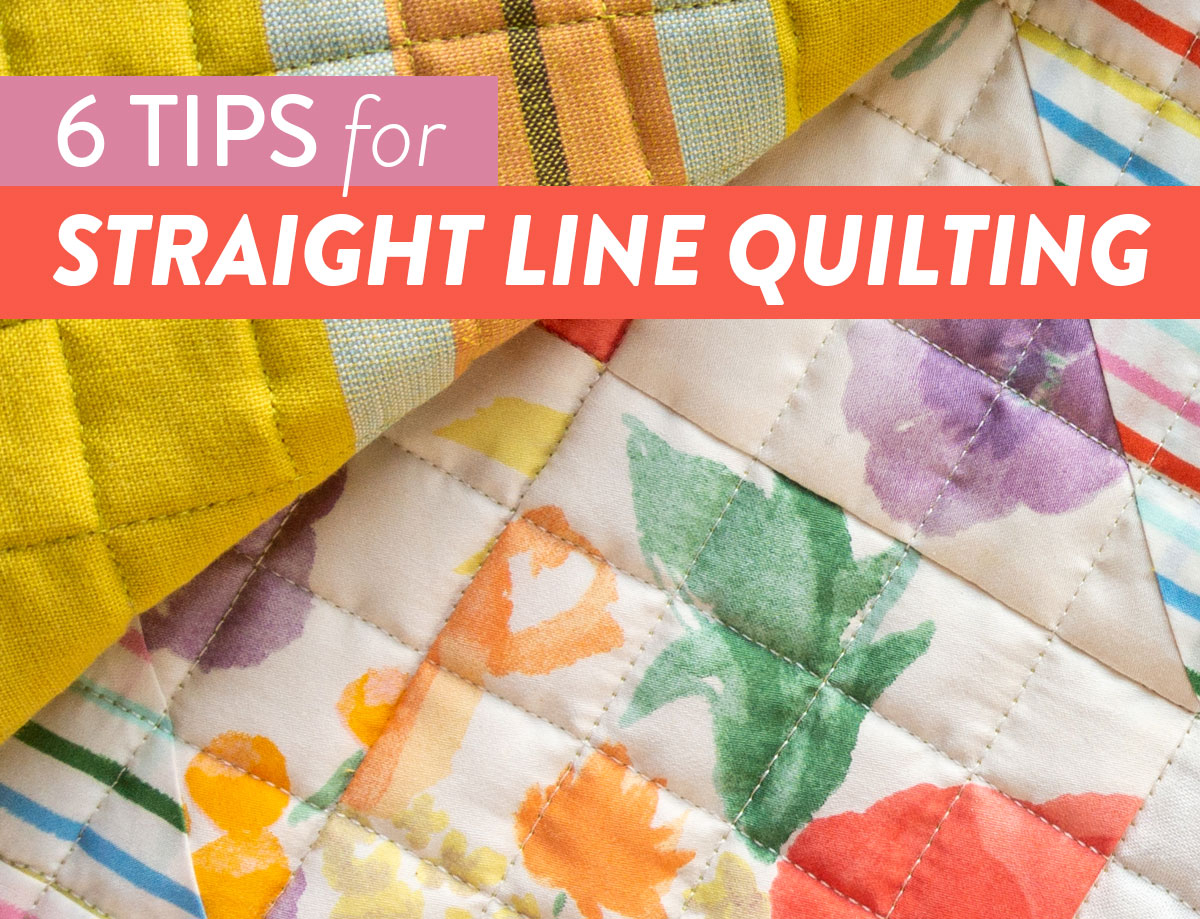
Using a Walking Foot
Using a walking foot is one of the easiest ways to quilt with a sewing machine. The foot helps evenly feed the fabric through the machine, resulting in even quilting stitches. To use a walking foot, attach it to the machine, select a quilting stitch and begin sewing.
Using Stencils
Stencils can be a great way to add intricate quilting detail to a quilt. Trace a quilting design onto the quilt top, then use a quilting stitch to sew on the design. For a more precise stitch, use a quilting ruler to trace the stencil and sew the design.
Using a Quilting Ruler
Using a quilting ruler can help create precise quilting stitches. To use a quilting ruler, attach it to the quilt top and use it to guide the sewing machine. The quilting ruler will help ensure that the quilting stitches are even and straight.
Using a sewing machine is a great way to quilt easily and accurately. With the right tools and techniques, anyone can create beautiful quilts with a sewing machine.
Tips for Machine Quilting at Home
- Choose the right needle: Select a sharp needle that’s designed for machine quilting. Avoid sharp needles with a large eye, as they are more likely to break.
- Set the correct tension: Tension is key to successful machine quilting. Adjust the tension dial until the bobbin thread and top thread are equal in size and tension.
- Lower the feed dogs: If your sewing machine has this feature, lower the feed dogs so that you can move the fabric freely.
- Choose the right thread: Select a thread that matches the weight of your fabric. A lightweight thread is ideal for quilting with fine fabrics, while a heavier thread is better for quilting with thicker fabrics.
- Stitch on the right side: Make sure you stitch on the right side of the fabric, so that the stitches are visible on the top of the quilt.
- Mark the fabric: Use a water-soluble marking pen to mark the quilt top and the backing fabric, so you know where to stitch.
- Be mindful of the fabric: Make sure to take extra care when stitching, as to not stretch or distort the fabric.
- Practice and take your time: Take your time when quilting, and practice on a scrap piece of fabric before beginning the real thing.
- Secure the edges: Make sure the edges of the quilt are properly secured with binding or a backing fabric.
Frequently Asked Questions
What Type of Sewing Machine Should I Use for Quilting?
For quilting, you should look for a sewing machine that is specifically designed for quilting. This type of machine will have features such as a larger workspace, a wider throat, and an adjustable presser foot for quilting. Additionally, a machine with a specialized quilting foot and the ability to stitch in a zig-zag pattern is essential. Look for machines with adjustable stitch length, width, and tension, as well as adjustable speeds. Some machines may also have features such as a drop-in bobbin and automatic needle threader.
How do I know which quilting stitch to use?
Straight Stitch: This is the most basic stitch used when quilting with a sewing machine. It is a single, straight line of stitching, typically used to join pieces of fabric together.
Stitch in the Ditch: This is a simple quilting stitch that is used to stitch along the seam of two pieces of fabric. It is used to hold the pieces together and add strength to the seam.
Echo Stitching: This is a quilting stitch that is used to create a decorative pattern. It is often used to create a pattern along the edges of a quilt or to create a border around the quilt.
Stippling: This is a quilting stitch that is used to create a textured pattern. It is often used to create a textured background for the quilt.
Cross-stitch: This is a quilting stitch that is used to create a decorative pattern. It is often used to create a pattern along the edges of a quilt or to create a border around the quilt.
Feather Stitch: This is a quilting stitch that is used to create a decorative pattern. It is often used to create a pattern along the edges of a quilt or to create a border around the quilt.
Quilting Lines: This is a quilting stitch that is used to create a decorative pattern. It is often used to create a pattern along the edges of a quilt or to create a border around the quilt.
What is the Best Way to Mark My Fabric for Quilting?
Using a Tailor’s Chalk Pencil
- Draw a light line on the wrong side of the fabric.
- The chalk line should be barely visible and easily erasable.
- It will not bleed through or stain the fabric.
Using Water-Soluble Markers
- Make a line on the wrong side of the fabric.
- The line will be visible on the right side of the fabric.
- It will disappear when it comes in contact with water.
Using Heat-Erase Pens and Markers
- Draw a line on the wrong side of the fabric.
- The line will be visible on the right side of the fabric.
- The line will disappear when it is exposed to heat.
Using Chalk Wheel
- Press the wheel lightly on the wrong side of the fabric.
- The line will be visible on the right side of the fabric.
- It will not bleed or stain the fabric.
How Do I Join Quilt Blocks?
To join quilt blocks, start by arranging the blocks in the desired pattern on a flat surface. Pin the blocks together as needed to keep them in place. Then, with the wrong sides of the blocks facing each other, position the blocks so that their edges line up. Sew the blocks together with a ¼ inch seam allowance, then press the seams open with an iron. Finally, topstitch along the seams for extra reinforcement.
How do I know when my quilt is complete?
- Finished Quilt Top: Make sure the quilt top looks complete with all the blocks and borders in place. All the seams should be joined together and the edges should be neat and even.
- Backing Fabric: The backing fabric should be the same size as the quilt top and should be wrinkle-free.
- Batting: The batting should also be the same size as the quilt top and should be free of any bumps or lumps.
- Quilting: The quilting should be even and consistent with no skipped areas or bunching of fabric.
- Binding: The binding should be neatly finished with no loose threads or gaps.
- Label: A quilt is not complete without a label identifying the quilt maker and the date it was made.
Once all these elements are in place, your quilt is complete!
Conclusion
Quilting with a sewing machine is a great way to make beautiful quilts from the comfort of your own home. With patience, practice, and the right tools, quilting with a sewing machine can become a fun hobby for anyone. While it requires a few extra steps than hand quilting, the end result is often worth the effort.






